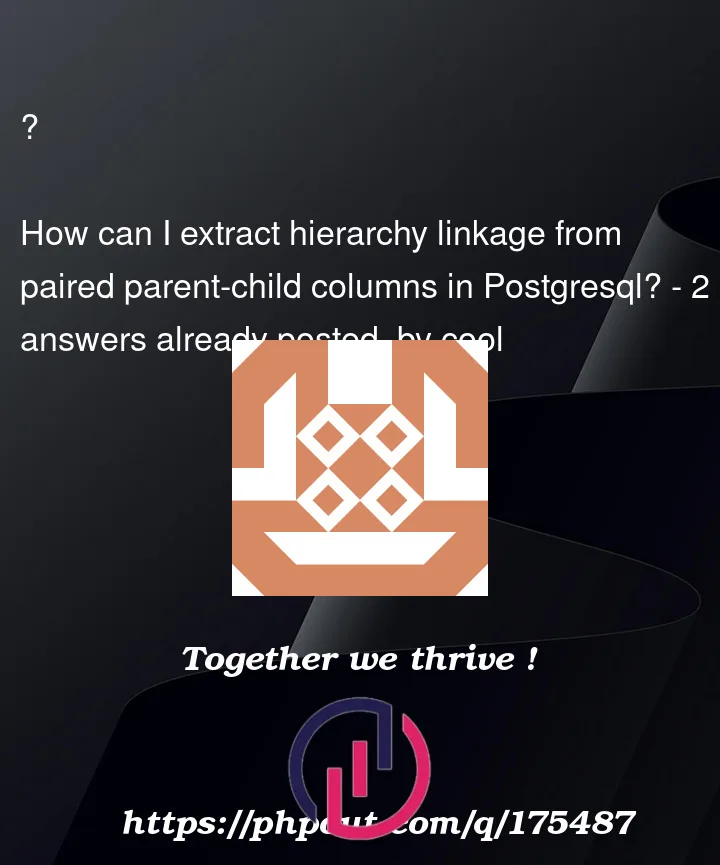| aid | bid |
|---|---|
| 1 | 2 |
| 1 | 3 |
| 2 | 3 |
| 3 | 4 |
| 5 | 6 |
| 7 | 8 |
| 8 | 10 |
| 8 | 9 |
I would like to extarct the hierarchy linkage for aid and bid.
No need to show each path, any id should show in one row only.
Expected Output:
| path |
|---|
| 1,2,3,4 |
| 5,6 |
| 7,8,9,10 |
I tried to use recursive function as below.
WITH RECURSIVE node_tree AS (
SELECT aid, bid, CAST(aid AS TEXT) || ',' || CAST(bid AS TEXT) AS path
FROM tmp
WHERE aid NOT IN (SELECT bid FROM tmp)
UNION ALL
SELECT nt.aid, h.bid, nt.path || ',' || h.bid
FROM node_tree nt
JOIN tmp h ON nt.bid = h.aid
)
SELECT DISTINCT path
FROM node_tree
ORDER BY path;
It returns below.
| path |
|---|
| 1,2 |
| 1,2,3 |
| 1,2,3,4 |
| 1,3 |
| 1,3,4 |
| 5,6 |
| 7,8 |
| 7,8,10 |
| 7,8,9 |
Seems it cannot handle one Id only show in one row:
- only need to show 1,2,3,4 and don’t want to show below.
| path |
|---|
| 1,2 |
| 1,2,3 |
| 1,3 |
| 1,3,4 |
| … |
- should show 7,8,9,10 instead of below:
| path |
|---|
| … |
| 7,8 |
| 7,8,10 |
| 7,8,9 |




2
Answers
There are several approaches using recursive queries to achieve the desired results. The following uses arrays to build the paths and keep track of the new nodes discovered with each iteration.
The recursive query begins by identifying the nodes without parents. These nodes establish the path roots and are also memoized as newly visited nodes. At each iteration, nodes that are children of the nodes visited in the prior iteration, but that have not yet been visited, are added to the path and memoized as newly visited nodes. This process continues until all nodes have been visited.
The final part of the query uses
DISTINCT ONwith rows sorted in ascending order by the path root and descending by depth to return only the full path from each root node. The path array is converted to text andREGEXP_MATCHis used to remove the enclosing braces.Your attempt is very good, although it’s missing something. I’d avoid to generate the string already in the recursion: probably better to extract each child for all anchestors, by recording the index of each children. And then apply aggregation of the children, ordered by index, and concatenated to their own anchestor.
Output:
Check the demo here.